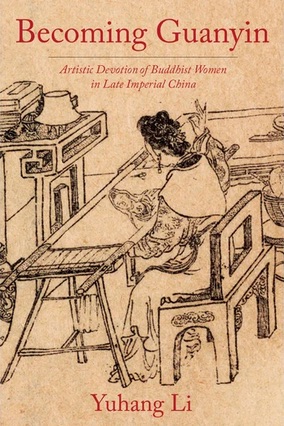The goddess Guanyin began in India as the bodhisattva Avalokiteśvara, originally a male deity. He gradually became indigenized as a female deity in China over the span of nearly a millennium. By the Ming (1358–1644) and Qing (1644–1911) periods, Guanyin had become the most popular female deity in China. In Becoming Guanyin, Yuhang Li examines how lay Buddhist women in late imperial China forged a connection with the subject of their devotion, arguing that women used their own bodies to echo that of Guanyin.
Li focuses on the power of material things to enable women to access religious experience and transcendence. In particular, she examines how secular Buddhist women expressed mimetic devotion and pursued religious salvation through creative depictions of Guanyin in different media such as painting and embroidery and through bodily portrayals of the deity using jewelry and dance. These material displays expressed a worldview that differed from yet fit within the Confucian patriarchal system. Attending to the fabrication and use of “women’s things” by secular women, Li offers new insight into the relationships between worshipped and worshipper in Buddhist practice. Combining empirical research with theoretical insights from both art history and Buddhist studies, Becoming Guanyin is a field-changing analysis that reveals the interplay between material culture, religion, and their gendered transformations.
- Table of Contents
- List of Figures
- Acknowledgments
- Introduction: Gendered Materialization of Guanyin
- 1. Dancing Guanyin: The Transformative Body and Buddhist Courtesans
- 2. Painting Guanyin with Brush and Ink: Negotiating Confucianism and Buddhism
- 3. Embroidering Guanyin with Hair: Efficacious Pain and Skill
- 4. Mimicking Guanyin with Hairpins: Jewelry as a Means of Transcendence
- Conclusion: From Home to Temple and Court: Restaging Women’s Devotional Objects
- Notes
- Bibliography
- Index

